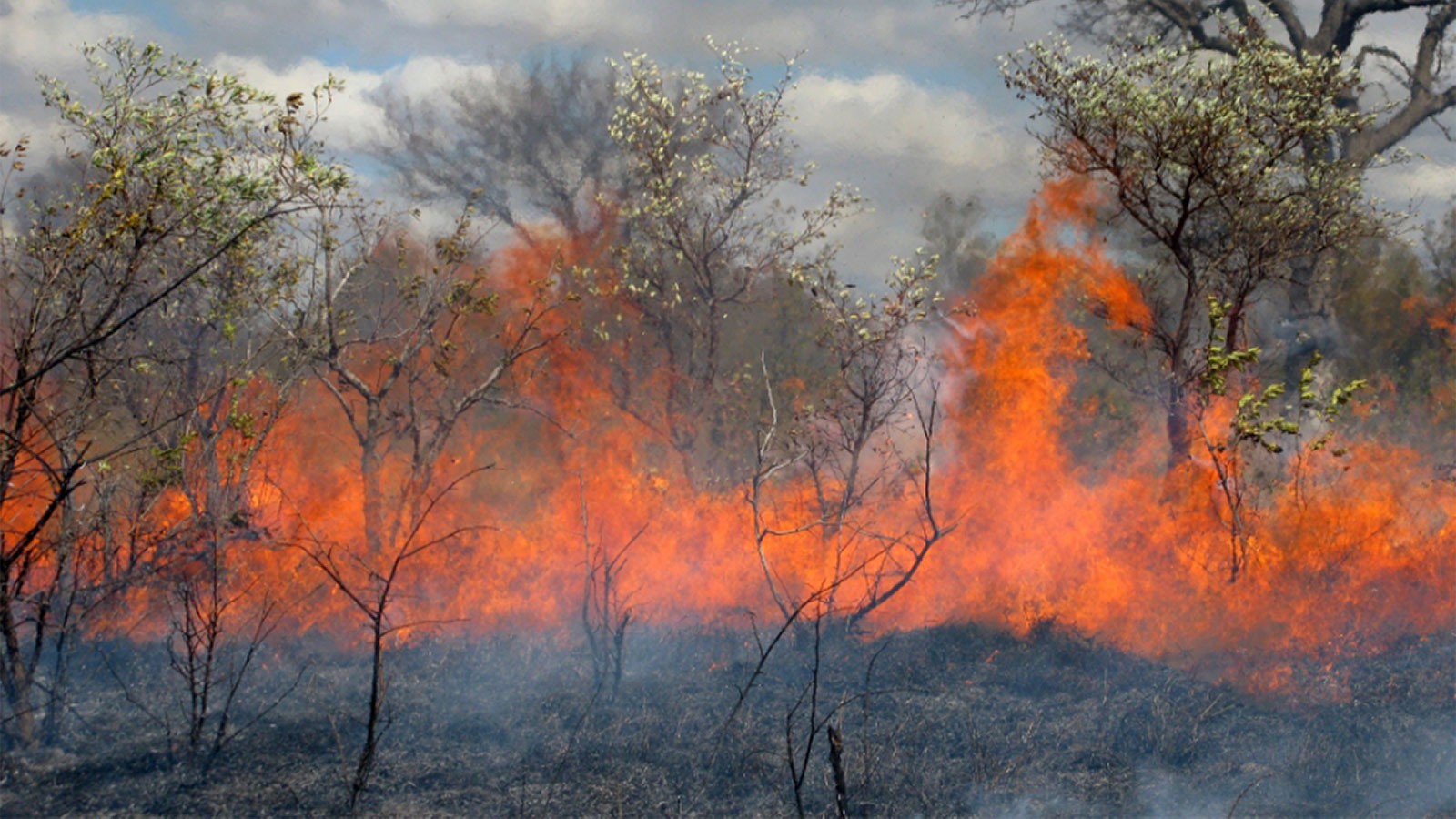Study: Adding Tree Cover on Savannas Has Only Limited Benefits Toward Fixing Climate Change
By Lael Gilbert |
Although savannas already hold substantial belowground carbon, new research found that increasing tree cover through fire suppression captures much less carbon than projected. (Photo by Carla Staver)
If it seems that something is too good to be true, it might just be. One strategy proposed to fight global climate change is to increase tree cover to billions of acres of treeless land, including the world’s savannas. But a new study of savannas in Africa, led by Yong Zhou, incoming assistant professor in the Department of Wildland Resources, suggests this approach would be far less effective than previously estimated.
It was a big idea — these mixed tree-grass ecosystems cover about one-fifth of the earth’s surface and are responsible for about half of the planet’s fire-related carbon emissions. Assuming that tropical savannas could store as much carbon as tropical forests, some studies projected that increasing tree cover on the world’s savannas could capture 280 tons of carbon per hectare. Although savannas hold substantial belowground carbon, especially in biomass and deep soils, Zhou and his team questioned the projected increase in capacity by adding trees.
The research, published in the journal Nature, compared the projected benefits of the idea with actual data from a decades-old experiment at Kruger National Park in South Africa, where scientists have studied how fire management affects the landscape. To measure the amount of carbon stored in savannas under different fire regimes, the researchers used direct measurements of tree and grass biomass taken from the experiment, combined with remote sensing techniques and chemical analysis of soil samples.
The good news, they found, is that even frequently burned savannas store more carbon in soil and in roots than previously estimated, even when prescribed burns occur annually. This finding highlights the importance of natural savannas, which are under widespread threat from land use conversion.
But the study also found that increasing tree cover through fire suppression captured much less carbon than previously estimated. Despite a 78% increase in tree cover, the ecosystem captured only 35% more carbon overall, corresponding to total gains of about 23 tons per hectare. These new, direct estimates from Kruger National Park suggest that the carbon sequestration potential of savannas is less than 10% of previous estimates.
“Our study provides one of the first direct estimates of whole-ecosystem carbon response to increasing tree cover over decades of fire exclusion in an African savanna. More such measurements from more savanna sites are still needed,” Zhou said. “Despite this, our results underscore that overestimating carbon gains from increasing tree cover in savannas and grasslands offers false promise for climate mitigation, at a very real cost to biodiversity and functioning of these ecosystems.”
“We need to recalibrate our assessments of the role savannas play in the global carbon cycle,” said co-author Carla Staver, “and we should not be relying on afforestation to save us from accelerating human-driven carbon emissions.”
WRITER
Lael Gilbert
Public Relations Specialist
Quinney College of Natural Resources
435-797-8455
lael.gilbert@usu.edu
CONTACT
Yong Zhou
Assistant Professor
Department of Wildland Resources
yong.zhou@usu.edu
TOPICS
Research 878stories Plants 186stories Climate 151storiesComments and questions regarding this article may be directed to the contact person listed on this page.







